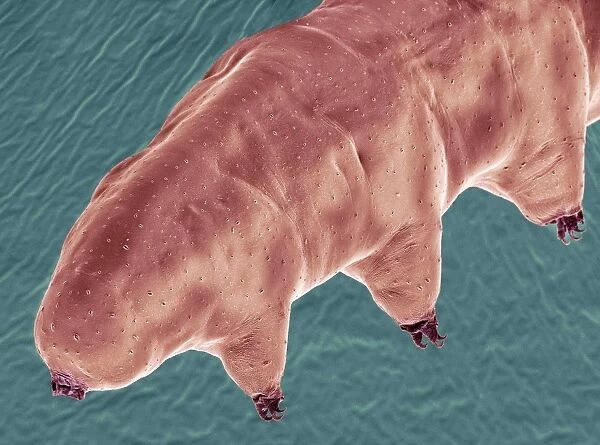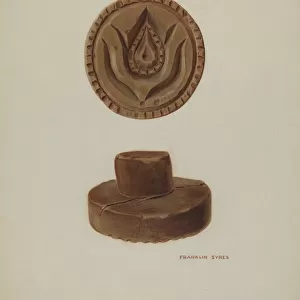Home > Science > SEM
Water bear, SEM C016 / 9086
![]()

Wall Art and Photo Gifts from Science Photo Library
Water bear, SEM C016 / 9086
Water bear (Echiniscus granulatus). Coloured scanning electron micrograph (SEM) of a water bear, or tardigrade (phylum Tardigrada). Water bears are small, water-dwelling, segmented micro-animals with eight legs that live in damp habitats such as moss or lichen. They are classed as extremophiles as they can survive dry conditions by changing into a desiccated state, in which they can remain for many years. Whilst in this form (known as a tun) they can withstand the most extreme environments and can tolerate radiation levels as high as x1000 more than other animals, including humans. They have even been brought back alive after spending 10 days in the vacuum of space. Magnification: x80, when printed at 10 centimetres wide
Science Photo Library features Science and Medical images including photos and illustrations
Media ID 9244369
© STEVE GSCHMEISSNER/SCIENCE PHOTO LIBRARY
Claw Claws Colored Cryptobiotic Drought Resistant Electron Microscope Extremophile Extremophiles Feet Legs Limb Limbs Meiofauna Micro Organism Micro Organisms Microbiology Microorganism Microorganisms Moss Piglet Mouth Tardigrada Tardigrade Tardigrades Water Bear Microbiological Waterbear
EDITORS COMMENTS
This print showcases the incredible world of micro-animals with a close-up view of a water bear, also known as a tardigrade. The colored scanning electron micrograph (SEM) reveals the intricate details of this fascinating creature belonging to the phylum Tardigrada. Water bears are remarkable organisms that inhabit damp environments like moss or lichen. With their segmented bodies and eight legs, they navigate through their aquatic habitats with ease. What sets them apart is their ability to survive extreme conditions by entering a desiccated state called a tun. In this form, they can endure dryness for many years and withstand even the harshest environments. These extremophiles possess an extraordinary resistance to radiation levels, surpassing other animals including humans by up to 1000 times. Their resilience is further highlighted by their successful return from spending ten days in the vacuum of space. The magnified image captures every minute detail - from its clawed limbs and head to its mouth - offering us an intimate glimpse into the microscopic world of these resilient creatures. This photograph not only highlights nature's diversity but also emphasizes the importance of studying microorganisms for scientific research in fields such as biology and microbiology. Steve Gschmeissner's skillful capture allows us to appreciate the beauty and complexity found within even the tiniest forms of life on our planet.
MADE IN AUSTRALIA
Safe Shipping with 30 Day Money Back Guarantee
FREE PERSONALISATION*
We are proud to offer a range of customisation features including Personalised Captions, Color Filters and Picture Zoom Tools
SECURE PAYMENTS
We happily accept a wide range of payment options so you can pay for the things you need in the way that is most convenient for you
* Options may vary by product and licensing agreement. Zoomed Pictures can be adjusted in the Cart.




